NOVEMBER 29, 2021: Last night we arrived in Faro, a large town on the eastern side of the Algarve. The sun had already set, it was just about to get dark, when we found our apartment. Easy parking right in front of the building. Thank goodness. The apartment is huge, and we got organized, lit the first night of Hanukah candles, had dinner and then did lots of laundry. There is a washing machine on the porch of the apartment, and we just hope everything dries before we move on tomorrow. Everything about this apartment is nice, in a relatively new building on the outskirts of town, except there is no heating or air conditioning system. One radiator on wheels that follows us as we move from the living room, kitchen, and bedroom (no, it does not move by itself – Mark pushes it from room to room). Seemed strange to me that a renovated apartment does not have a heating/cooling system.
This morning we went to the last Jewish site on our list. In Faro, there is an old Jewish cemetery with a museum in one of its buildings. Unlike Eastern Europe, where a Jewish cemetery can be found in most villages, here in Portugal there are very few places to see a Jewish cemetery and the one in Faro was the first Jewish cemetery in Portugal that we would be visiting.
As we drove there, after two weeks in rural Portugal, it was bizarre to be back in civilization – tall apartment buildings, wide streets, honking cars, tattoo studios, Burger Kings, etc.
We arrived at the cemetery, but parking was a problem. It was across the street from a hospital, and cars were parked everywhere – both legally and illegally. After several times around the block, we finally got a parking space and walked to the site. Unfortunately, the gates were locked, and it looked like it had been closed for a long time. The wood of the entrance ramp had rotted away. There was note that they would open after the holidays – but the note was dated from 2019.
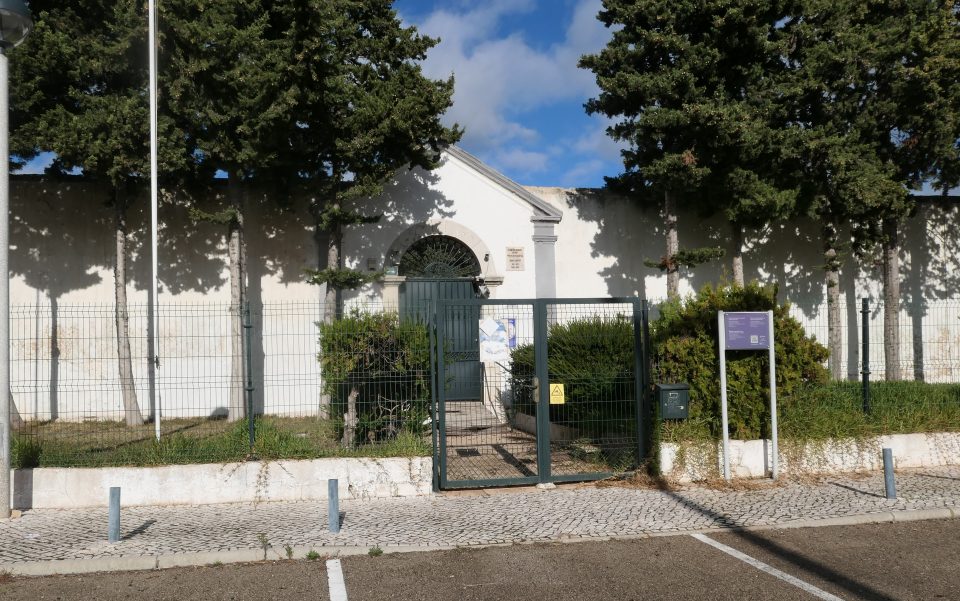
The closed Faro Jewish Cemetery and Museum 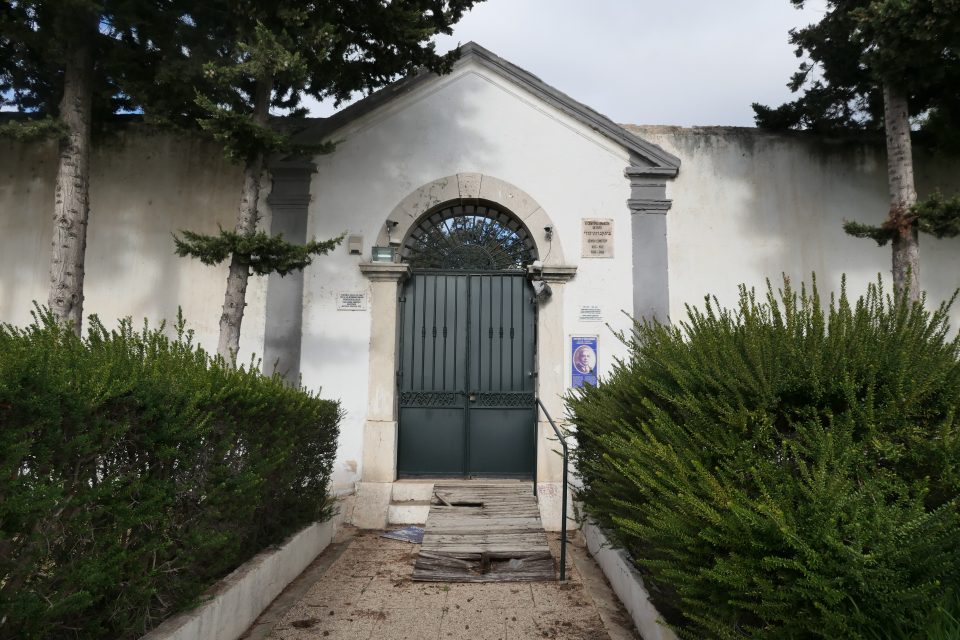
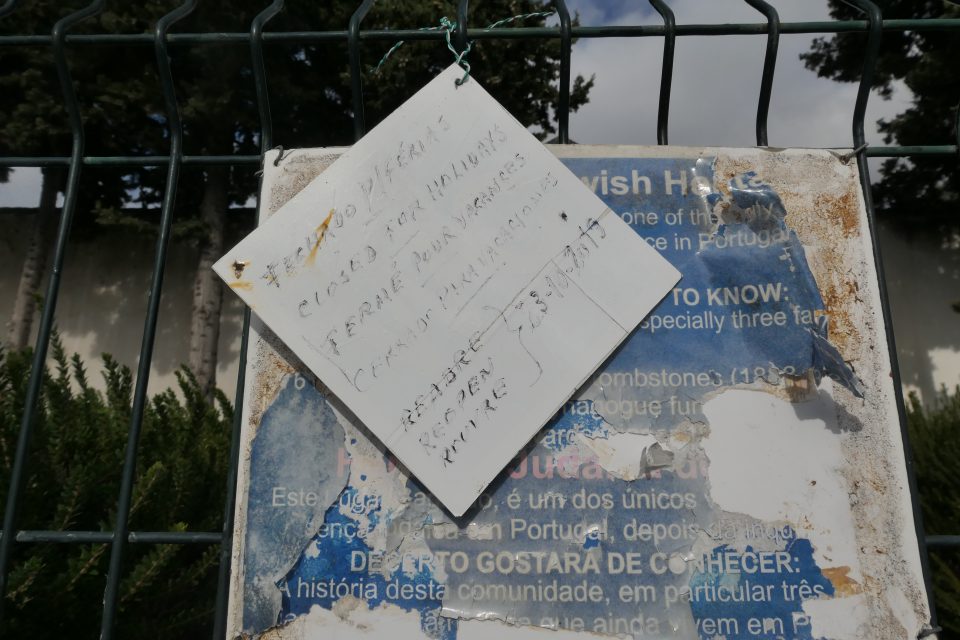
Closed for Holidays – Reopen 23.10.2019
Through the fence we saw a stone with a commemoration for the first book printed in Portugal in 1487. We would come to understand the importance of this later in the day.
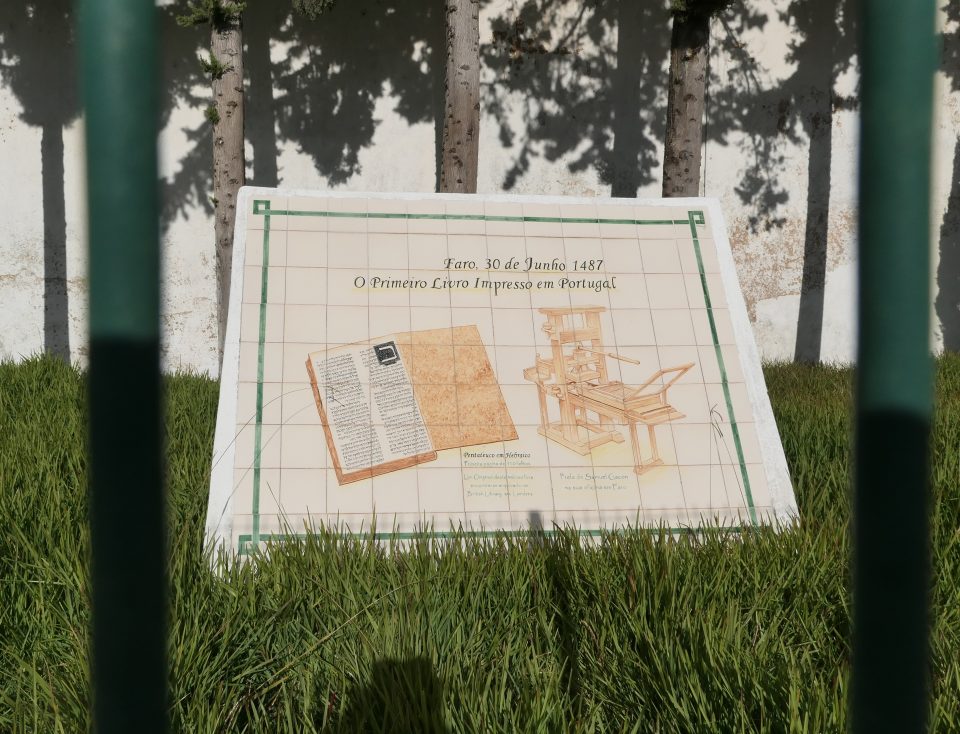
Commemorating the first book printed in Portugal in 1487
Feeling disappointed, we decided to go to the tourist bureau and ask if they know why the cemetery is closed. The woman at the bureau told us that there is one old man who takes care of the cemetery, and he is not healthy. She gave us his phone number. Mark called and we learned that he is in the hospital waiting for a new heart. No one else has the keys. The cemetery belongs to the Jewish community of Lisbon, and they need to arrange to transfer the responsibility for the cemetery and museum to someone else, but this has not happened yet. This was such a different experience than we he had in the rest of Portugal – where they take the smallest remnant of Jewish heritage and turn it into a magnificent museum. Here you have a cemetery and a museum already, and it is neglected and not accessible.
Seeing our interest in Jewish Heritage, the woman at the tourist bureau recommended that we call Ernesto – he offers Jewish tours of Faro. We set up a meeting with him for tomorrow morning.
Another disappointment was that we wanted to visit a cork factory. There used to be several in the area that gave tours. When we called to reserve, we left messages, but did not get any positive responses.
Portugal is the biggest cork producer in the world and produces more than 50% of the world’s cork supply. Over 25% of the world’s cork trees are in Portugal. Cork is totally a sustainable substance – you do not harm the tree in order to harvest the cork. The bark of the tree (which is the cork) is peeled once every nine years during the lifetime of a tree (about 270 years). For the first few harvests, the cork is not of a good enough quality to be used for wine stoppers. Only after 43 years, can it be used for bottle corks. This reminded me of carob trees that take 70 years to give their first fruit and the story in the Talmud about the man who planted carob trees to ensure a good future for his descendants. Seems to be the same with cork trees.
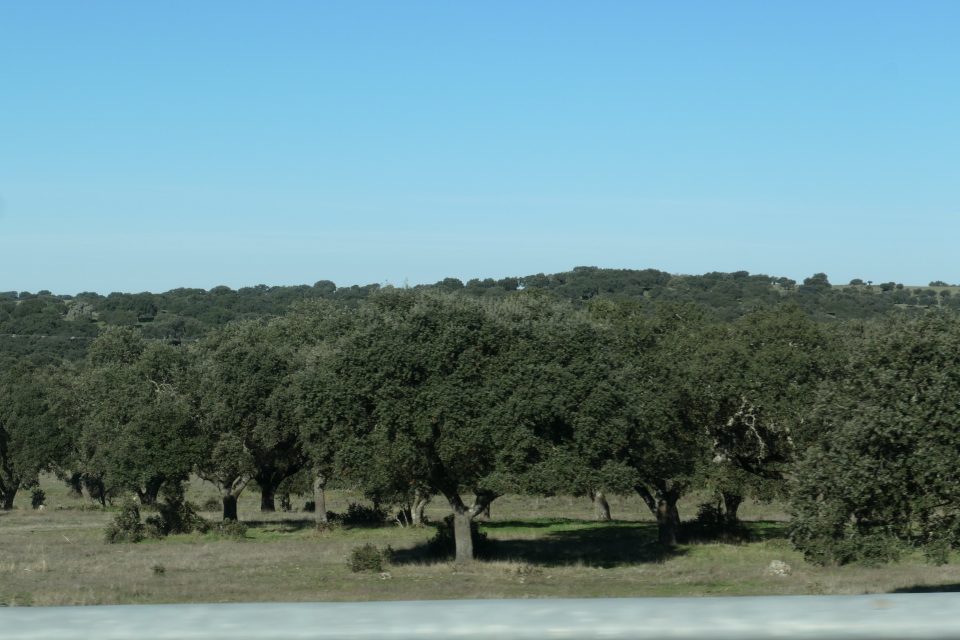
A field of cork trees 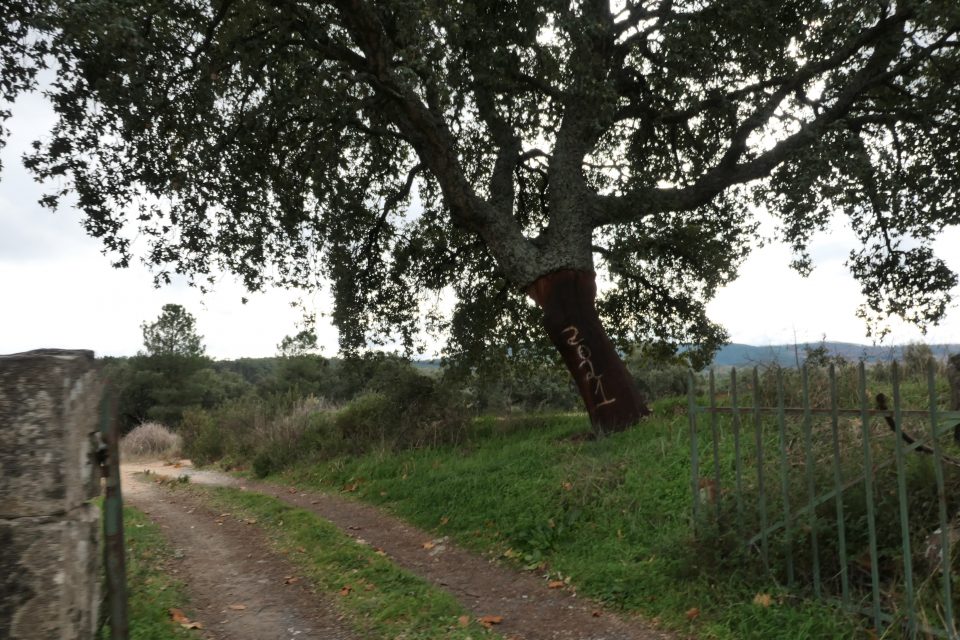
This is a recently harvested tree. The date written on the tree is the year harvested.
At the beginning of this century, the cork industry in Portugal suffered a major crisis – wine companies were moving away from natural cork stoppers to plastic ones. This set the whole industry in a large decline. To save themselves, they found other uses for cork – from handbags, wallets, shoes, building supplies and even surf boards. In addition, they are heavily advertising the advantages of a natural cork stopper to the wine industry. Both these efforts have helped, and the industry is slowly reviving. None of the cork factories still operating currently give tours. One told us maybe they will start again next year.
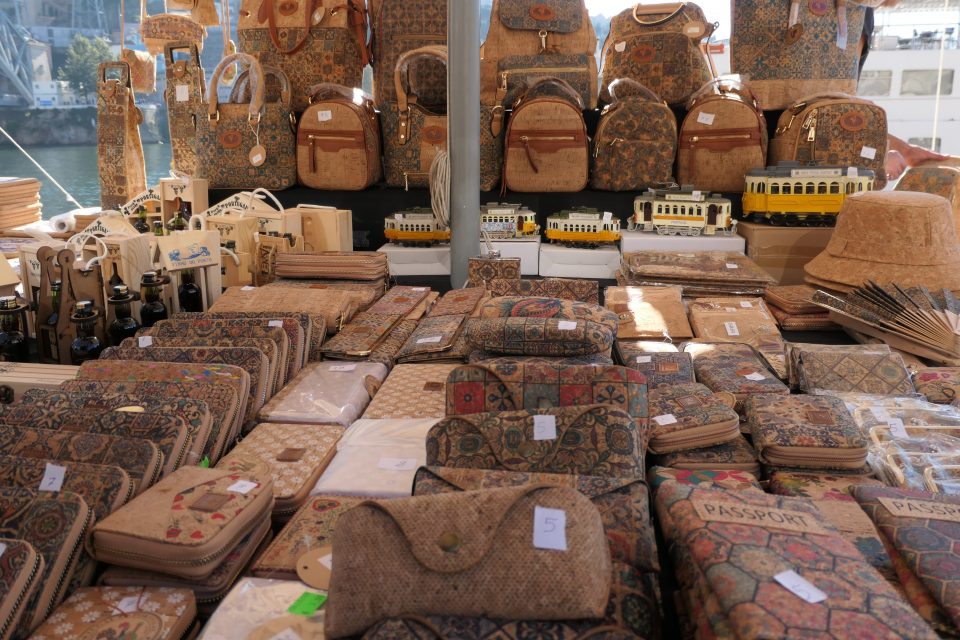
Selling cork products
We had parked our car in a spot reserved for the Tourist Bureau, so we drove to the huge free parking lot at the other end of the walled city. We entered through the gate next to the sea. There used to be a castle here, but it was torn down in the 1920’s and a beer factory was built in its place. The factory never went into production, and today the building is used for art exhibits and events.
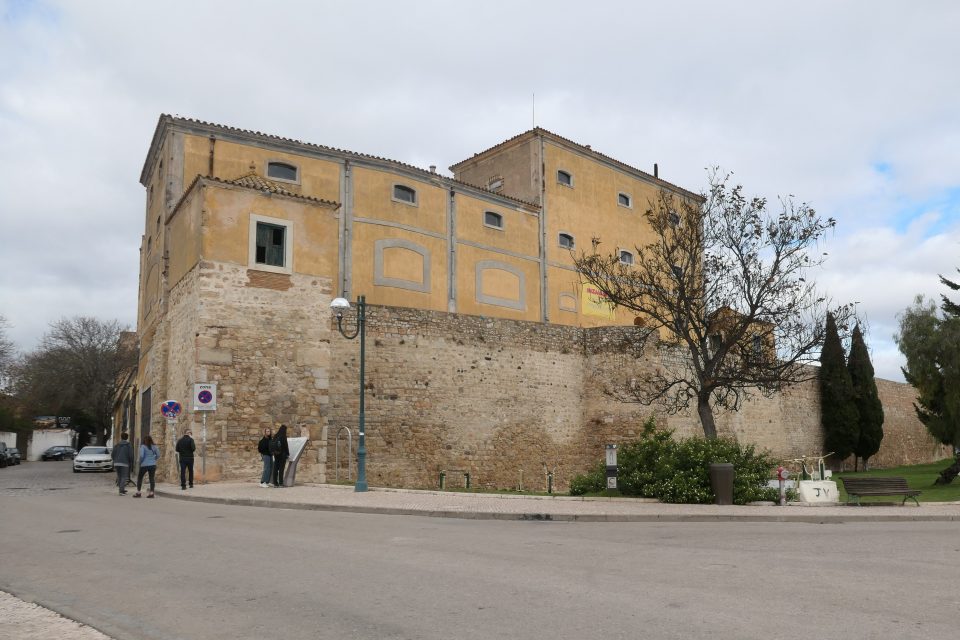
Entrance to the walled city. The yellow building is the beer factory that never opened.
The old walled city in Faro was small, but nicely restored. Many restaurants filled the several plazas. We walked through the streets and as we were exiting through the gate on the opposite side, Mark spotted a free walking tour that had just begun. We asked if we could join and then spent the next two hours with Marcelo, our guide, and one other couple. Knowing we were from Israel, he added stories and places of Jewish interest.
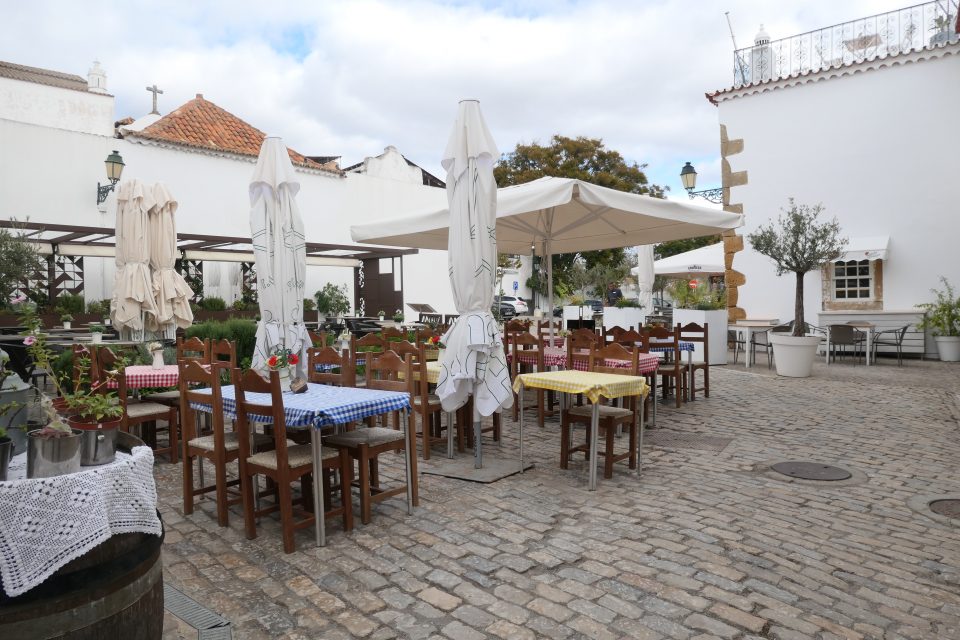
The walled city is full of restaurants 
Unlike northern Portugal, here in the south, citrus trees are abundant
Some of the more interesting things we learned included a stop at the entrance to the old Chapel of the Episcopal Palace. In this chapel, the bishop had a private library that included the first edition of the first book ever published in Portugal – the Pentateuch in Hebrew, published in Faro in 1487 on a Guttenberg press by Samuel Gacon, a Jew who came to southern Portugal to escape persecution in Spain. In 1596, the Earl of Essex, Robert Deveraux, came to Faro and looted this library. Today this first edition book can be seen in the British Library in London. Now we also understood why outside the Jewish Cemetery they commemorate a printing press.
What is today the Municipal Museum in Faro, was once the location of the Jewish quarter. It was Monday, and museums in Portugal are closed on Mondays, so we could not enter. The king of Portugal gave Faro to his queen as a present, and in 1519 Queen Dona Leonor tore down the Jewish quarter and built there a nun’s convent. Eventually it was sold to the city and became the Municipal Museum. In the Jewish Tour that we would take the next day, we would learn more details about this.
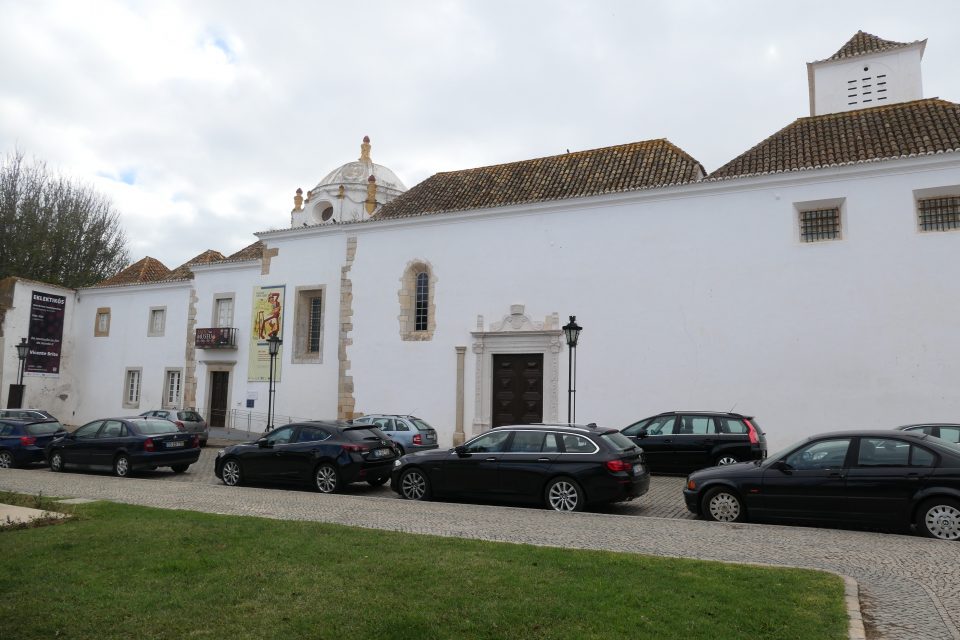
The Municipal Museum located where the Jewish Quarter used to be
Another interesting story was about Christopher Columbus. In Portugal, they are convinced that he was Portuguese and perhaps a New Christian. Some facts to support this are that when he returned from the discovery of America, he did not go directly back to Spain to report to the King and Queen, but rather first spent two weeks in Portugal, assumingly visiting family and friends. Of all the places he discovered, his favorite was the island which he named Cuba. In Spain and in Italy, there are no towns or villages called Cuba, while in Portugal there is a small village called Cuba, and some have gone so far as to say he was born there. In his journals, he several times mentions the Jewish holidays.
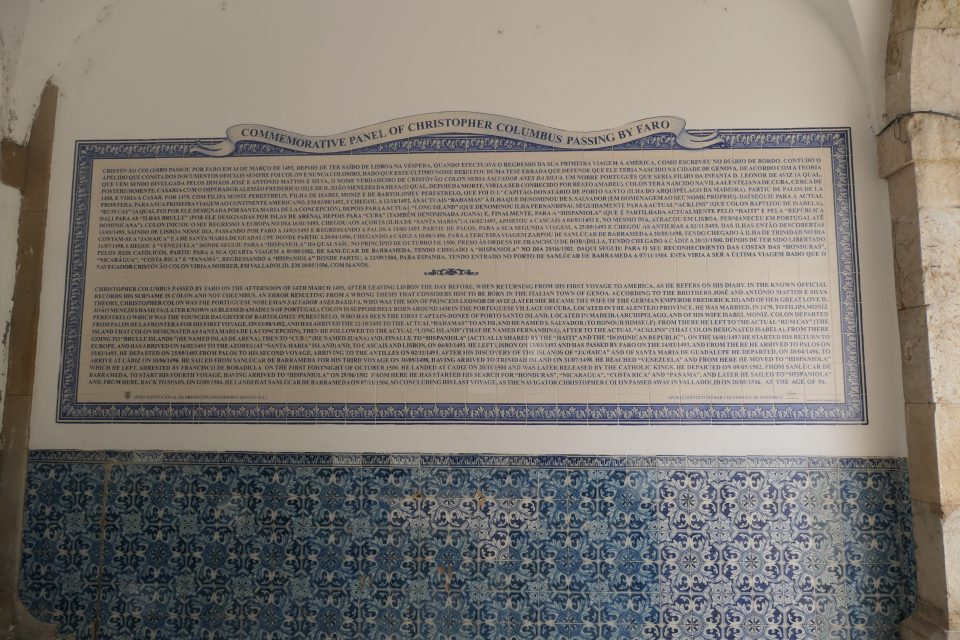
The Portuguese version of the Christopher Columbus story
One other thing we talked to the guide about, is the storks that nest in many different places in the Algarve. He explained to us (he happened to also be a ornithologist), that they were almost extinct and became a protected species. You are not allowed to touch or move their nests, and you will therefore find nests scattered throughout Southern Portugal. Today the storks are plentiful, and over the years have changed from being a migratory bird, to staying year-round in this area. We saw their nests on building towers, on top of telephone poles, and even on the large electric poles alongside the highways.
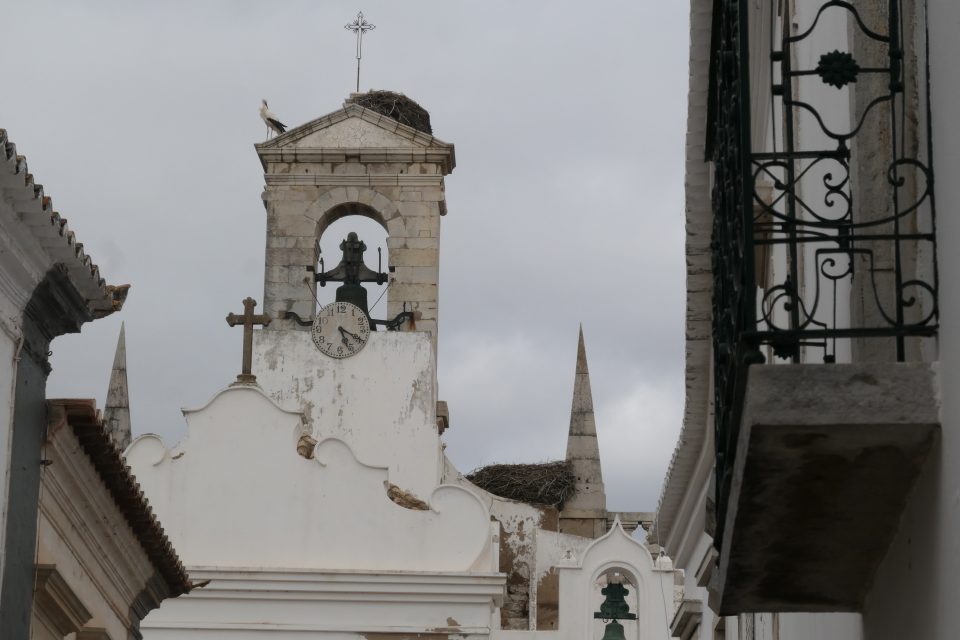
Stork and stork nests 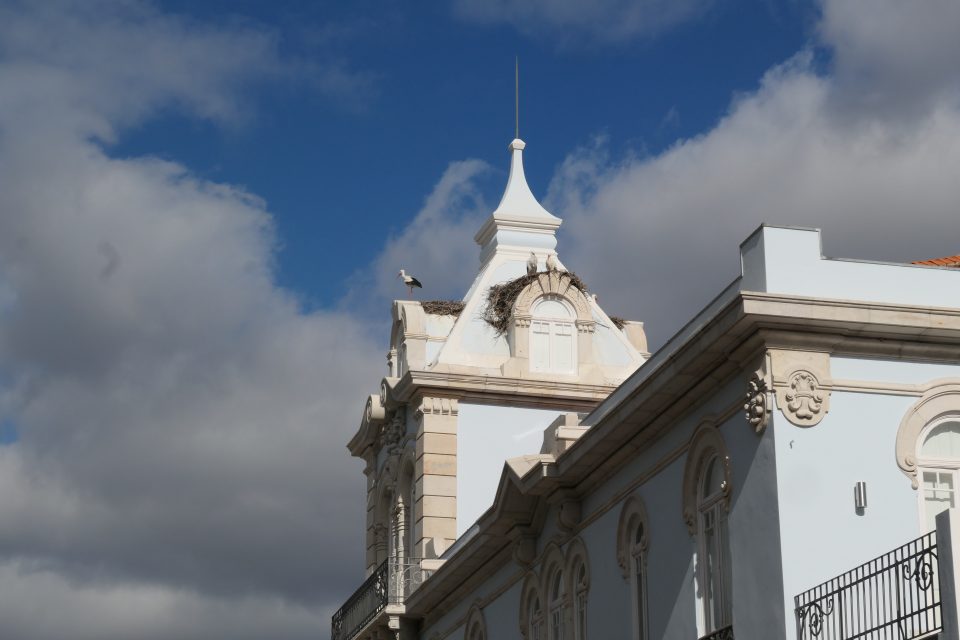
It was now past lunch time and we were very hungry. Being a large town, we usually would have had a large choice of vegan restaurants, but just like the museums, most were closed on Mondays. We walked to the one place that was open called the Vegan Box, a small family-run restaurants that offered homemade vegan food, very similar to what Mark and I would cook for ourselves. The highlight was they had vegan Pastéis de Nata (Portuguese Custard Tarts) for Mark to try. Tasty, but not as good as the real thing.
Our last stop was the Rio Formosa Nature Reserve. The Ludo loop trail is a 7-kilometer walk among the wetlands right outside of Faro. It was getting late, and it would soon be “Animal Time” – that hour before dark when wildlife becomes active. We had read that we might see flamingos here, and were hoping to spot some.
The first part of the walk is part boardwalk, part trail that leads you along the marshes. Birds were abundant.
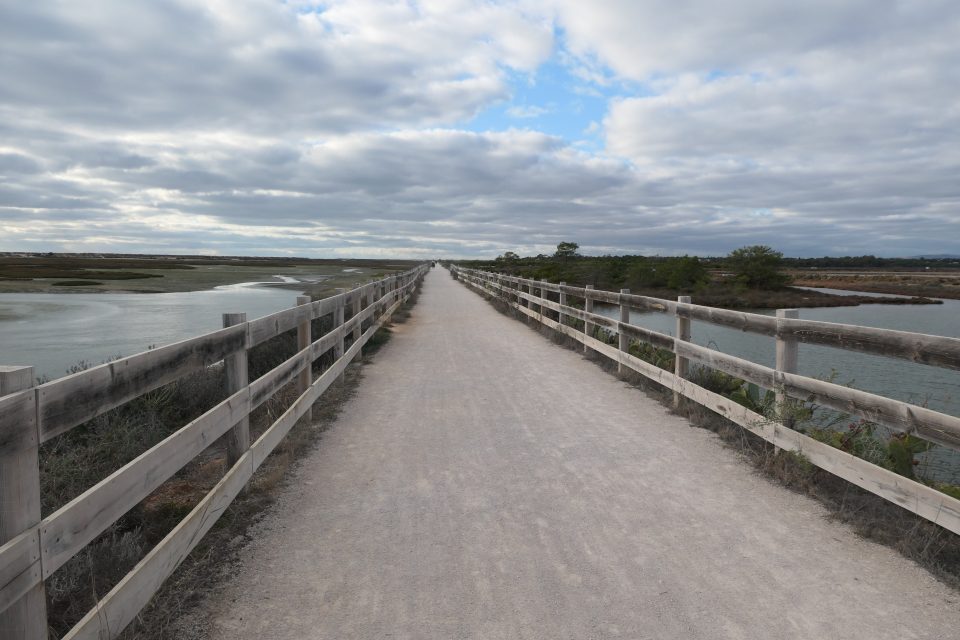
Parque Natural da Ria Formosa 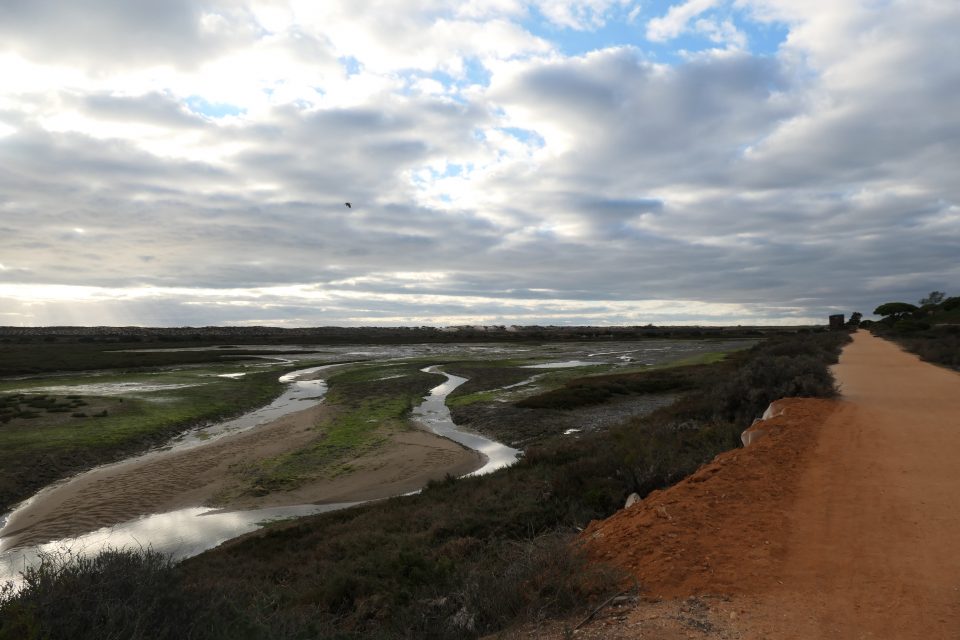
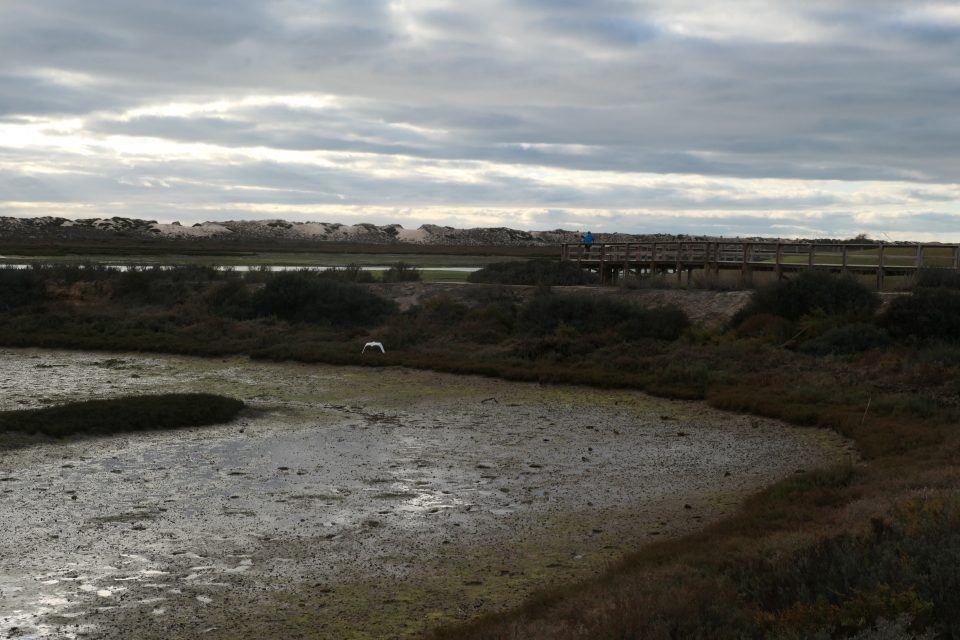
The next part of the walk is alongside a golf course surrounded by astonishing homes. The houses were as interesting as the birds.
The last part of the loop is through man-made salt beds and you even walk by a large mountain of salt. Flamingos like the salty water, and it was here that we finally saw them.
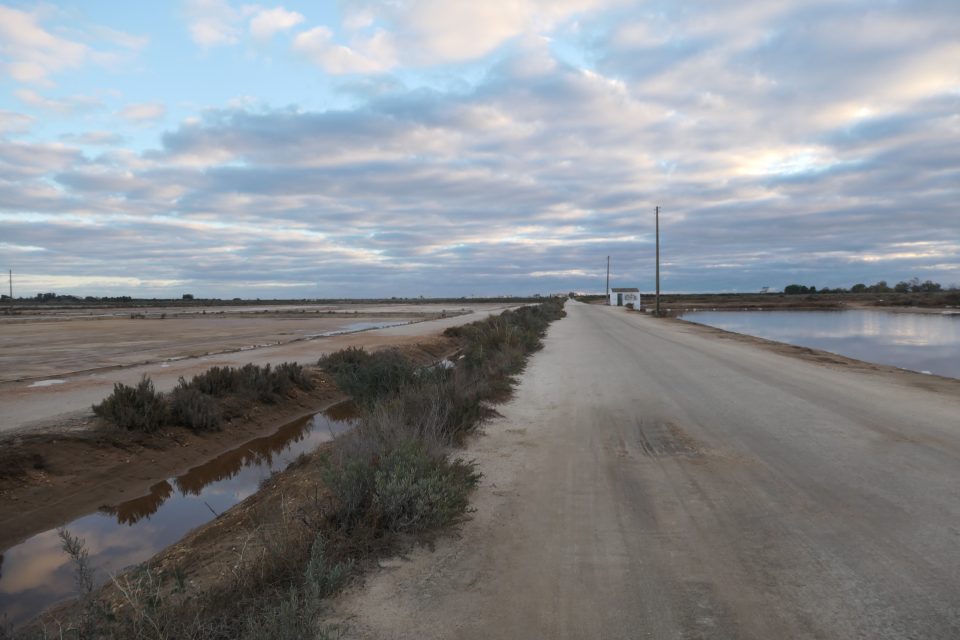
The salt beds 
Piles of salt 
Flamingos! 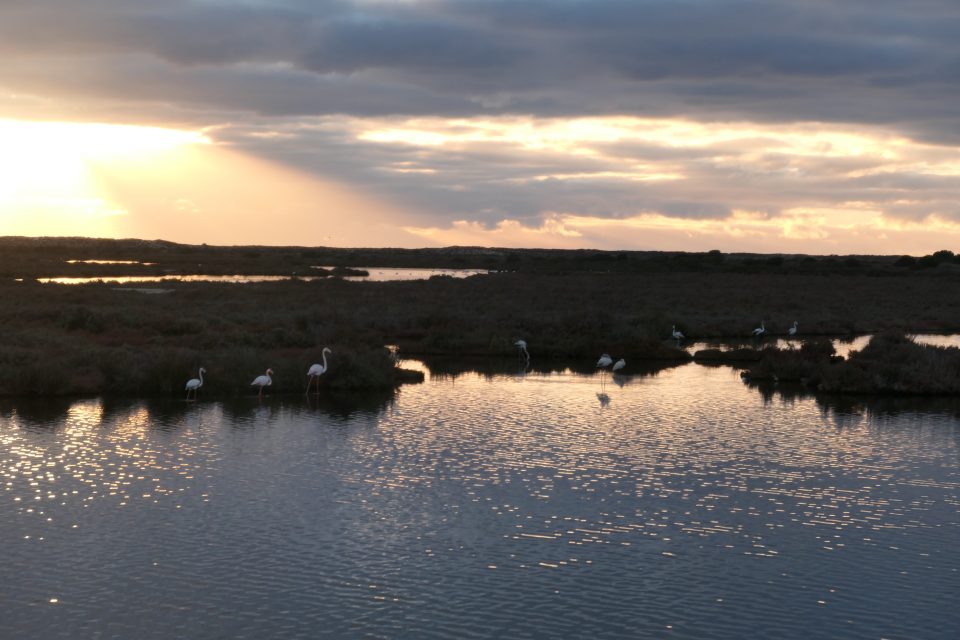
Lots more flamingos
It had been a wonderful and long day – over 22,000 steps worth – and we reached our Airbnb happy and exhausted. Tomorrow we will continue to explore Faro further.
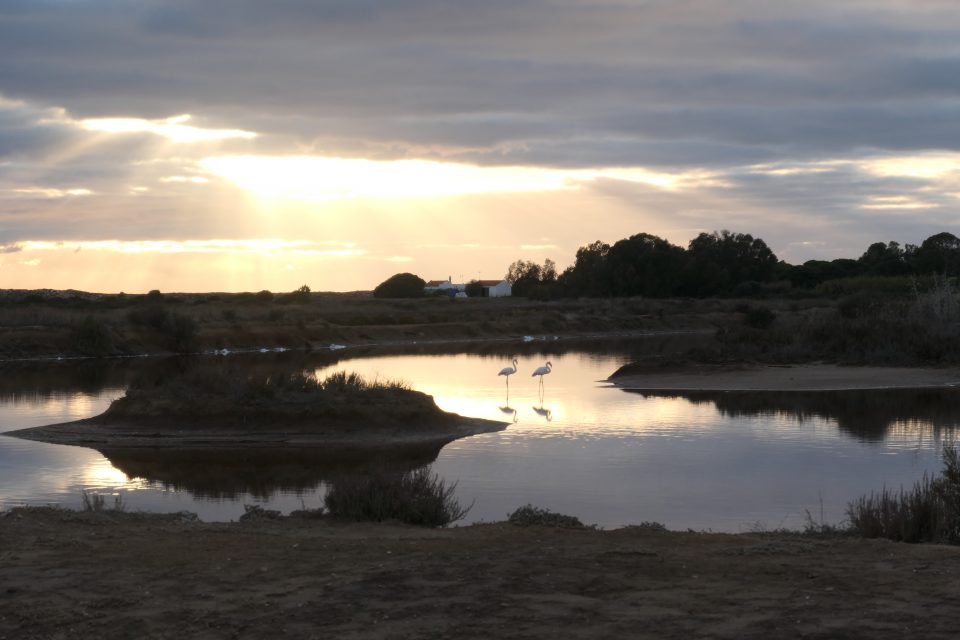
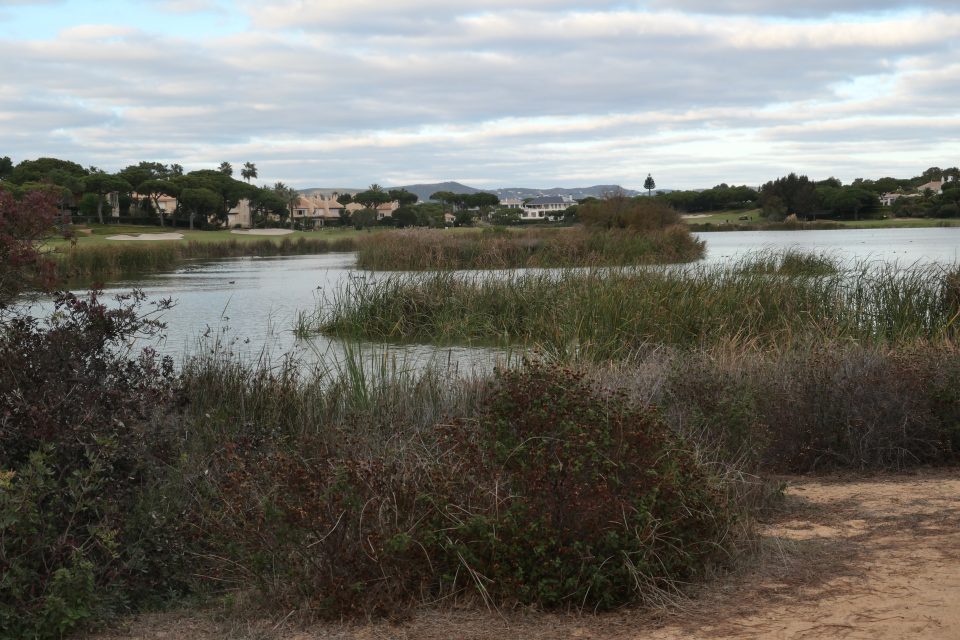
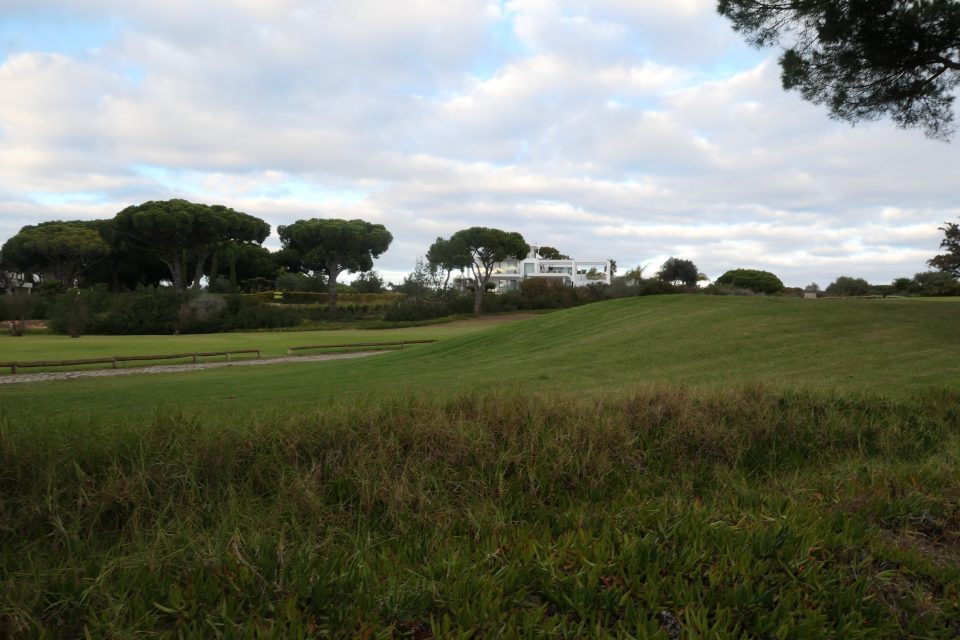
All very interesting.
Flamingo sighting – very cool! Wondering what color they are because on my screen they look white. Are they not pink? (If they are white, then they must each something other than shrimp.)
No these were white flamingoes.